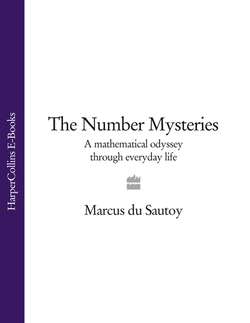Читать книгу The Number Mysteries: A Mathematical Odyssey through Everyday Life - Marcus Sautoy du - Страница 17
Which prime is this?
ОглавлениеFIGURE 1.15
You might think that this is the prime number 5; it certainly looks like 2+3. However, the here is not a plus symbol—it is in fact the Chinese character for 10. The three characters together denote two lots of 10 and three units: 23.
This traditional Chinese form of writing numbers did not use a place-value system, but instead had symbols for the different powers of 10. An alternative system of representing numbers by bamboo sticks did use a place-value system and evolved from the abacus, on which when you reached ten you would start a new column.
Here are the numbers from 1 to 9 in bamboo sticks:
FIGURE 1.16
To avoid confusion, in every other column (namely the 10s, 1000s, 100,000s, …) they turned the numbers round and laid the bamboo sticks vertically:
FIGURE 1.17
The Ancient Chinese even had a concept of negative number, which they represented by different-coloured bamboo sticks. The use of black and red ink in Western accounting is thought to have originated from the Chinese practice of using red and black sticks, although intriguingly the Chinese used black sticks for negative numbers.
The Chinese were probably one of the first cultures to single out the primes as important numbers. They believed that each number had its own gender—even numbers were female and odd numbers male. They realized that some odd numbers were rather special. For example, if you have 15 stones, there is a way to arrange them into a nice-looking rectangle, in three rows of five. But if you have 17 stones you can’t make a neat array: all you can do is line them up in a straight line. For the Chinese, the primes were therefore the really macho numbers. The odd numbers, which aren’t prime, though they were male, were somehow rather effeminate.
This Ancient Chinese perspective homed in on the essential property of being prime, because the number of stones in a pile is prime if there is no way to arrange them into a nice rectangle.
We’ve seen how the Egyptians used pictures of frogs to depict numbers, the Maya drew dots and dashes, the Babylonians made wedges in clay, the Chinese arranged sticks, and in Hebrew culture letters of the alphabet stood for numbers. Although the Chinese were probably the first to single out the primes as important numbers, it was another culture that made the first inroads into uncovering the mysteries of these enigmatic numbers: the Ancient Greeks.
